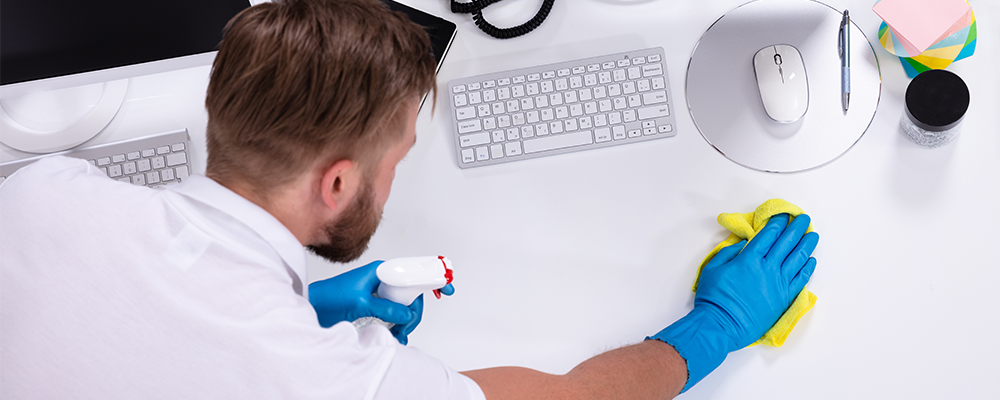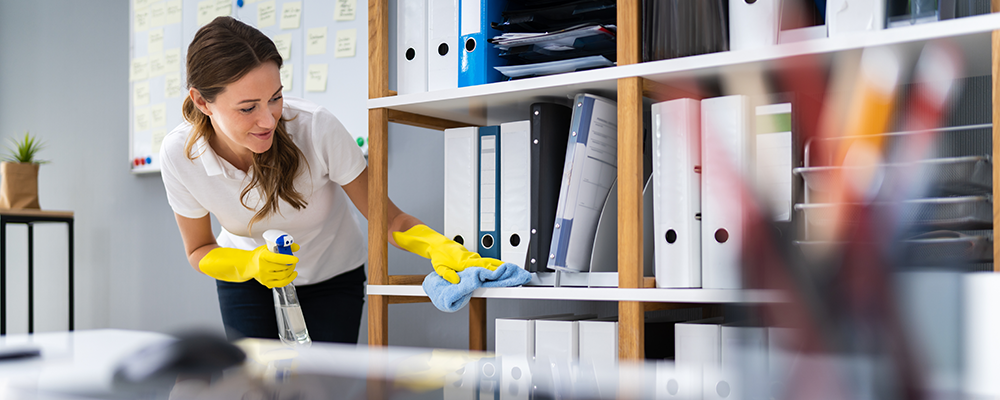Keeping our surroundings clean and germ-free is essential to maintaining good health. However, with all the cleaning products available in the market today, it can be challenging to know which ones to use for different situations. In this article, we will discuss the differences between cleaning, disinfecting, and sanitizing, and when to use each method.
Cleaning, disinfecting, and sanitizing are all terms used to describe the process of getting rid of germs and bacteria from surfaces. Although these terms are often used interchangeably, they all refer to different methods of cleaning. Understanding the differences between these methods is essential to ensure that you are using the right products and techniques to keep your surroundings clean and germ-free.
Cleaning is the process of removing dirt, dust, and other visible debris from surfaces. This method does not kill germs or bacteria but instead helps to reduce their numbers. Cleaning usually involves using soap, water, and a scrubbing brush or cloth to remove dirt and grime from surfaces.
Disinfecting is the process of killing germs and bacteria on surfaces using chemicals. This method involves using a disinfectant product, which is designed to kill specific types of germs and bacteria. Disinfecting is an important process for reducing the spread of infectious diseases.
Sanitizing is the process of reducing the number of germs and bacteria on surfaces to a safe level. Sanitizing does not necessarily kill all germs and bacteria but reduces their numbers to a level that is safe for humans. Sanitizing is usually done using a sanitizing product, which is designed to reduce the number of germs and bacteria on surfaces.

When to Clean, Disinfect, and Sanitize
Knowing when to clean, disinfect, and sanitize is essential to ensure that you are using the right commercial cleaning supplies and techniques for each situation. Here are some situations when you should use each method:
Cleaning: When surfaces are visibly dirty or dusty, cleaning is necessary to remove the dirt and grime.
Disinfecting: When you need to kill germs and bacteria on surfaces, disinfecting is necessary. This method is particularly important in high-touch areas such as doorknobs, light switches, and countertops.
Sanitizing: When you need to reduce the number of germs and bacteria on surfaces to a safe level, sanitizing is necessary. This method is suitable for areas that are in contact with food or where people gather, such as kitchen countertops or tables.
How to Clean, Disinfect, and Sanitize Effectively
To clean, disinfect, and sanitize effectively, you need to use the right techniques and products for each method. Here are some tips on how to do it properly:
Cleaning
• Use soap and water to remove visible dirt and grime from surfaces.
• Use a scrubbing brush or cloth to scrub the surface thoroughly.
• Rinse the surface with clean water to remove soap residue.
Dry the surface with a clean microfiber cloth.
Disinfecting
• Read the instructions on the disinfectant product carefully and follow them.
• Use gloves and eye protection when handling the product.
• Apply the disinfectant product to the surface and let it sit for the recommended time.
• Rinse the surface with clean water or wipe it with a clean cloth to remove the disinfectant residue.
Sanitizing
• Use a sanitizing product that is appropriate for the surface you want to sanitize.
• Follow the instructions on the product carefully and use the recommended amount.
• Apply the sanitizing product to the surface and let it sit for the recommended time.
• Rinse the surface with clean water or wipe it with a clean cloth to remove the sanitizing residue.
What Products to Use for Cleaning, Disinfecting, and Sanitizing
Using the right products for cleaning, disinfecting, and sanitizing is crucial to ensure that you are effectively reducing the number of germs and bacteria on surfaces.
For general cleaning, mild detergents, such as dish soap or all-purpose cleaners, are usually sufficient.
For disinfecting surfaces and killing germs and bacteria, products containing bleach or hydrogen peroxide are often recommended. Other effective disinfectants include alcohol-based cleaners, quaternary ammonium compounds, and phenolic cleaners.
When it comes to sanitizing, products containing hydrogen peroxide, chlorine bleach, or quaternary ammonium compounds are effective at reducing the number of bacteria and viruses on surfaces. We recommend using our Sanitizing Wipes for easy cleaning.
It is important to carefully follow the instructions on these products and use them safely, as some can be harmful if not used correctly. Always wear gloves and follow any other safety precautions listed on the label.

How Often Should You Clean, Disinfect, and Sanitize?
The frequency of cleaning, disinfecting, and sanitizing depends on the situation and the area you are cleaning. High-touch surfaces such as doorknobs, light switches, and countertops should be cleaned and disinfected daily. Areas that come into contact with food or where people gather should be sanitized daily. However, for other surfaces, cleaning once a week may be sufficient.
Cleaning, disinfecting, and sanitizing are all essential processes for maintaining good health and reducing the spread of infectious diseases. By understanding the differences between these methods and using the right products and techniques for each situation, you can effectively reduce the number of germs and bacteria on surfaces and keep your surroundings clean and germ-free.
Frequently Asked Questions
What is the difference between cleaning and disinfecting?
Cleaning removes visible dirt and grime from surfaces, while disinfecting kills germs and bacteria on surfaces.
What is sanitizing?
Sanitizing reduces the number of germs and bacteria on surfaces to a safe level.
When should I clean, disinfect, and sanitize?
Clean when surfaces are visibly dirty or dusty, disinfect when you need to kill germs and bacteria and sanitize when you need to reduce the number of germs and bacteria on surfaces to a safe level.
How often should I clean, disinfect, and sanitize?
The frequency of cleaning, disinfecting, and sanitizing depends on the situation and the area you are cleaning. High-touch surfaces should be cleaned and disinfected daily, while areas that come into contact with food or where people gather should be sanitized daily.
What products should I use for disinfecting and sanitizing?
You should use products that are recommended for each method, such as Hypochlorous Acid for disinfecting and hydrogen peroxide for sanitizing.


